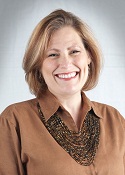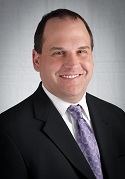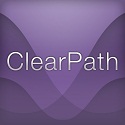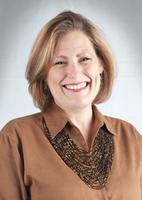Interview with Mary Rapaport and Kevin Mensink, ReSound
Topic: ReSound Update - New Resources for Professionals Including ClearPath App and Consumer Marketing Services

Mary Rapaport

Kevin Mensink
CAROLYN SMAKA: Mary, thanks for your time today to go through the new ReSound app, ClearPath. How did this development come about?
MARY RAPAPORT: We frequently spend time talking to our customers about the kinds of challenges they face when recommending hearing instruments to their patients. One of the things we found out was that they are looking for better ways to connect the value of top level technology with the hearing priorities of the patient. One of the biggest challenges customers told us they face is personally feeling comfortable while recommending the highest level of technology. They say they really need to help their patients see the value that the hearing aid investment delivers. We heard that sometimes patients can say, "You know, looking at the audiogram, it doesn't look that bad to me." Or "I have a moderate hearing loss. Moderate doesn't sound bad to me." We wanted to help hearing care professionals articulate in a way that is meaningful to the patient, exactly what it means if a patient has a moderate hearing loss - to show the patient what they are missing. We also heard that our customers don't want patients to see them as a salesperson trying to push top end technology. Professionals take a lot of pride in the counseling they give to their patients, but are quick to make sure their patients don't perceive their counseling as selling. Sometimes even when they believe that the highest level of technology may be the best solution for certain customers, they tell us they are not always comfortable asking the patient for the additional investment because they are not always clearly able to explain to a customer why they need a premium product. We thought all of that was a great place to start developing an app. It was essential that we offer an app that we knew would help them with a meaningful problem.
We knew from the start that we shouldn't build a program that would recommend a hearing aid to the patient. We wanted to ensure that the app didn't upstage the dispenser, didn't take over the recommendation and wasn't a self-serve tool. We wanted to keep dispenser in the center of the conversation. We believe in the dispenser/patient relationship and we believe it's our job to make those conversations good ones.
SMAKA: It would need to be a supportive tool.
RAPAPORT: Right, and the tool would have to be very flexible because if you ask one hundred professionals, they will tell you one hundred ways to have the conversation about hearing aids. That was a little daunting, but we knew that one of the goals was to make it very flexible.

I'll take you through some of the features of our new app;ClearPath™. As I mentioned, there are many ways that professionals begin the hearing aid discussion. A typical way to begin may be first to discuss styles or models of hearing aids. So, you can use ClearPath to just show the various models of hearing aids. You'll see a lot of apps do that, but we think that ours does it in a way that allows the professional to better engage the patient. Some professionals use a lot of offline tools and questions to counsel the patient. We tried to integrate a lot of those into ClearPath. ClearPath can be used to walk through the various models, and show the patient what they look like. When the professional makes a recommendation, the patient can then look at that model in various colors.
You can also take a walk through the products from a feature-by-feature perspective. For example, some professionals may approach the conversation by comparing what is in the Alera nine, seven and five performance levels. Other professionals feel very strongly about having a clinical discussion. We wanted ClearPath to also support a clinical consulting model by providing actual visual data to talk about hearing loss and why the patient feels so impacted by hearing loss. Professionals are able to enter the audiogram of the patient and have a conversation about the audiogram. For those patients who might say, "Well, that doesn't look so bad", the professional can then pull up speech sounds to overlay on the audiogram so that they can counsel the patient about what they are actually hearing and not hearing. They can have that traditional counseling conversation with great visual support.
For patients who still aren't convinced or when the conversation needs to go into more detail, further tools are available in ClearPath. The professional may pull up scenarios like a restaurant, a church, or outdoors and then talk about where speech occurs in these scenarios. They can compare it to the audiogram and can relate the hearing loss back to what is most meaningful for the patient.
SMAKA: The spouse or loved ones can also participate in the conversation.
RAPAPORT: Exactly. The investment in hearing aids is also an investment for the spouse. It means that he or she maybe doesn't get to buy that boat this year or go on vacation because instead that family may be investing in hearing aids. ClearPath brings the spouse into the conversation, helping them understand what things sound like to the hearing impaired spouse. You can also compare the patient's hearing loss to normal hearing. So, if someone has a moderate hearing loss, you can play an audio sample that will simulate what a person with a moderate loss would hear. We also use layman's terms, since we know that patients don't fully understand what "moderate" or "severe" means when it comes to hearing loss.
So ClearPath is a way to engage the patient and the spouse who is helping to make that decision about this investment and we think it's a pretty useful tool. Some professionals may have the conversation as a discussion about lifestyle. So you can take those same scenarios and talk about lifestyles, i.e. - "Is it important for you to hear clearly outdoors? Are you around small children with soft or high pitched voices? Do you dine out? Is one-on-one conversation important to you? Do you participate in sporting events, or attend places of worship?" The professional is able to walk through those scenarios and ClearPath will connect the features of hearing aids with the scenarios that the patient identifies as most important. In this way, the patient begins to understand the connection between, "I dine out a lot and so these must be the most important features that I need to have in my hearing aid." Then, the professional can click on a feature to talk about its benefit and further define its function.
SMAKA: It looks to me that the app can stay as general or go into as much detail as the professional wants.
RAPAPORT: Exactly. It builds out from where you start and can go into as much depth as the professional wants - they can stop at any point. Also, you'll notice there's no pre-defined linear progression. We're not forcing anyone to counsel in a particular way;we've built an app that is flexible enough to support the many, many ways that professionals effectively counsel today.
The notion is that ClearPath helps support the conversations professionals are having with patients during the hearing aid selection and recommendation process. The patient can see the features associated with their lifestyle or the conversation they're having about what's important to them. They have more confidence that there's a solid process behind deciding which technology is best for them. In this way, ClearPath reinforces the recommendation of the dispenser. Lastly, it can generate a report that reflects the discussion, and includes the professional's email address, telephone number, name of the practice and other relevant contact information. The report can be emailed from the app to the patient or printed out, and serves as a recap of the discussion about the solution that was recommended.
SMAKA: It is so much more professional and easy to understand, rather than sending the patient home with a handful of brochures with various models and features marked up and circled in pen.
RAPAPORT: Definitely. The whole document is personalized to the patient and reinforces the conversation that occurred between the patient and professional. One of the other things that is very nice about ClearPath is that it includes all of the documentation in our library. So if you already have a patient who has lost their remote control guide, you can email it directly to the patient. In that way, it's a little bit greener, more accessible, and easy to use.
SMAKA: Tell me about the feedback you've gotten from professionals.
RAPAPORT: We've had early release of this, and the feedback has been really great. What's been fun is that the dispensers all find different things that they love. We've heard different things that they like and different things that they don't. One customer will tell us they love one ClearPath feature but find they don't need to use another feature, and the next customer will tell us just the opposite. And that's great because we know we've developed a very flexible tool that supports all the various ways professionals counsel. You can start right at the beginning with the assessment questions or go straight to features. It's a really different approach to what apps should do. We're proud of that. We're not trying to get in the way, we're trying to get out of the way so our customers can do what they do best. We believe that by continually staying in touch with professionals we can continually develop this platform to meet the future needs of professionals.
We've also heard feedback that ClearPath helps professionals feel more comfortable talking about higher tiers of technology because the patient can see exactly why they might be making the recommendation, and as a result professionals feel more confident.
SMAKA: How do professionals get the ClearPath app?
RAPAPORT: It's available in the app store for iPad.
SMAKA: Thanks, Mary. Kevin, what's new with ReSound in terms of consumer marketing services?
MENSINK: There's a lot happening and it's more important than ever for customers to understand how marketing in this industry is changing. What worked 5 years ago is not working today, the variety of vehicles to reach patients is increasing, and perhaps most impactful of all is the cost of marketing and acquiring a new patient. Just two years ago it was $450 - today it costs about $850.
SMAKA: Why is that?
MENSINK: There's a host of reasons it's happening. If you look at the U.S. market, VA sales comprise nearly 20% of the market, 3rd party insurance and individual state programs make up another 30%. That means, only 50% of the market is available to an independent practitioner. So it costs more to try and steer that patient to your practice, and there is more competition. In addition, marketing is changing. Years ago, yellow pages and newspaper advertising were the primary means to reach new patients.
Now with the Internet, there's a whole new paradigm of marketing. Today, the first thing people do when they want information about something is Google it.
There's a great book called Wikibrands. The basic premise of the book is that the days of marketing and branding being about what you tell the market about yourself are gone. Today, your brand is the sum of whatever Joe, Bob, Sue and Tom say about you on the Internet. You don't define your brand anymore. What other people say about you and your brand gets a lot more credibility than anything you could say because it's considered independent. Hearing care professionals have to change the way they think about consumer marketing in order to respond to these changes, and that's where we can be a resource. We can help plan for this new paradigm and make recommendations for each practice.
The other piece that practices don't often think about is the relationship between their marketing plan, and what happens in their office. They used to be completely separate things. In the new marketing paradigm, where your brand is what people say it is on the Internet, your marketing plan and the patient's in-office experience are inextricably linked. Professionals must focus on the in-office experience as the primary basis of their marketing plan.
SMAKA: How do you gauge whether you're providing a great in-office experience?
MENSINK: We can provide a few key barometers to help measure that, and also to help you know when you have a problem.
One of those metrics is the help rate, or what some people call the close rate. A good benchmark is 60%. If you're below that, you have a problem. You can also measure repeat sales to existing patients, which should also be about 60%. Also, you can look at the number of referrals, or the revenue generated from referrals. We recently met with a practice who indicated that they were generating $150,000 in revenue from referrals.
While at first this may sound impressive, when we sat down with them and looked at their database they had over 9,000 patients. When we did the numbers, it turned out that less than half of one percent of their patients were actually referring. If less than one percent of the people come into your office and leave feeling compelled to tell others, you have the basis for a really expensive marketing plan. Practices cannot continue to rely on newspaper ads and inserts to drive new patients to their practice to cover up a poor in office experience. All of these things hint at a poor experience.
Going back to the cost of a new patient, most practices today can't afford to spend $850 per patient. So we can help practices learn how to turn that one patient into 10. Although Internet marketing may seem scary, there's no better way to turn one patient into 10 than a good referral program and good Internet marketing. It's cheaper and more cost effective than anything else you can do to grow your business.
SMAKA: What kind of resources can ReSound provide in terms of Internet marketing?
MENSINK: We have a great patient referral program. Our data show that 93% of referred patients purchase hearing aids, 94% purchase binaurally, and on average they spend more because it's a trusted referral. Patient referral works because it's directly controlled by the professional. You have no better moment of control over your brand than the customer experience right after they walk out your door satisfied with their hearing aids. It's timely as they just experienced the benefit of the product and services you provided. Their fears about the process or about getting taken advantage of are gone. The keys to a successful referral program are being consistent, and not making any judgment on who can refer. This is known as the realtor's rule - "don't judge someone's ability to make a purchase or a referral by how they're dressed or how they act."
SMAKA: I think a lot of audiologists have good intentions to ask for referrals, but maybe aren't so consistent during busy days in the office.
MENSINK: Right. Consistency is key. It helps to have a specific process and instructions to get referrals from all your patients. You know, we've had people who have told us that they use our referral cards in their practice and give them to their patients. We ask if they told those patients to put the cards in their wallets. Why? It completely changes the program results when you tell patients to carry the cards in their wallets because you never know when the conversation or opportunity will come up to refer someone to you. It's not something the patient can anticipate, so by always having the cards with them the number of referrals increases.
SMAKA: What kind of results have you had with the referral program?
MENSINK: We've had great results. We have practices generating almost $500,000 in revenue on an annual basis on patient referrals alone.
SMAKA: That's impressive. Kevin, a lot of professionals need help with social media. Can ReSound provide support in this area?
MENSINK: Absolutely. Earlier I referred to how your customers define you and your brand via the discussions they are having on the Internet. Social media sites like Facebook are some of the places these discussions are happening.
A good rule of thumb with social media is to think about your own social interactions. Think about people you enjoying engaging with - how do they act? They listen more than they talk. They ask about you, they don't focus on themselves. In conversations, they join and share when they have something relevant to say. They don't monopolize conversations and overwhelm people. Social media is meant to be social. When engaging in social media you want to follow the same rules as in other social interactions, such as listen more than you talk. Don't talk (or post) items only about you and your practice. Don't overwhelm your friends or followers with constant updates;post something to whet the appetite for more information such as a presentation. To assist customers with more detailed assistance, we've created a Social Media 101 guide that is very helpful.
SMAKA: I agree - you can't apply the old rules of marketing and use social media like a billboard or advertisement;it's about engagement. Those are good tips. What other misconceptions do you see?
MENSINK: Well, many people don't understand the idea of having a content plan. Social media content should not be something that is thought of week to week, and it should be consistent with the brand's image and messaging. When we talk about branding, we ask, "What makes you different? What separates you from your competition?" The answers to these questions are the essence of branding. Oftentimes professionals will tell me it's "Service". "Service" is something that everyone thinks they provide;we need to get to the next level for effective branding.
Especially with content planning for social media, everything should relate back to that customer experience. If your marketing creates dissonant elements in the patient's mind, it will take away from the emotion you're trying to create. Social media is a patient engagement tool, and a new way to interact with your database. It is not meant to bring in direct sales, and I'm suspect of consultants who promise that it will.
We offer a social media guide, and it provides step by step instructions for using Twitter, creating and maintaining a Facebook page, important considerations for social media, and how to effectively plan your resources. We can also provide guidance on Facebook advertising. The feedback from our customers has been great and social media assistance has been a growing area of need for practices.
In addition to social media, we're providing more assistance for customers with their websites. We work on search engine optimization, search engine marketing, helping people use key words and tags to their advantage, and in general helping them gain traffic through free and paid search advertising.
SMAKA: Marketing in general is not something that's taught in Au.D. programs, and online marketing, as you mention, is a whole new paradigm.
MENSINK: Yes, it's an exciting time as we venture into this new area. I think the fundamental principle we've always operated under at ReSound is we're not going tell you to do something unless we've tested it, tracked it, and fully understood it. We set up our entire consumer marketing programs around the idea that when we tell you something it's with respect for how much money you are going to invest based on our recommendations. We are not going to recommend something unless we know it works or, if it's something new, we're going to be up front and tell you that, and have a conversation about the potential advantages and risks so that you can make the best decisions for your practice.
SMAKA: Thanks for your time today, Kevin, to review what ReSound has to offer for consumer marketing.
MENSINK: My pleasure.
For more information about ReSound, visit https://www.gnresound.com/ or the ReSound web channel on AudiologyOnline.


